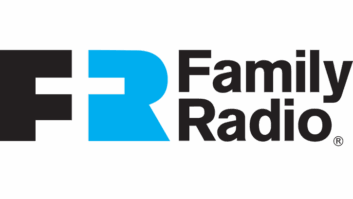
DaySequerra will launch the M4DDM Diversity Delay Monitor at NAB and will be educating attendees about the need to address time alignment drift.
This is the first DaySequerra product to employ its new digital signal processing architecture. The DSP runs a proprietary TimeLock algorithm to maintain alignment of the HD Radio main program signal (MPS) analog and HD-1 digital audio.
“Using its selective off-air tuner, the M4DDM measures the MPS analog and HD-1 digital audio diversity and generates a continuous stream of correction vectors to keep the analog and digital audio perfectly time- and level-aligned,” DaySequerra stated in the announcement.
“These correction vectors can be processed internally by the M4DDM to delay the digital program audio or can be sent via Ethernet to an HD Radio Embedded Exporter, such as Harris’ new HDE-200 to provide the necessary delay. Additionally, DaySequerra’s M4DDM has digital audio outputs for confidence monitoring and alarm outputs for loss of program audio and OFDM sidebands as well as HD Radio data and RBDS data payloads.”
The M4DDM is compatible with HD Radio NE-IBOC Gen I and Gen II installations as well as new installations using Embedded Exporters from Broadcast Electronics, Continental, RVR, Harris and Nautel running iBiquity MPS Framework version 4.3 or later.
President David Day in the announcement described the product as a solution to “one of the most nagging problems facing HD Radio station engineers today — drift of time alignment between the analog and HD-1 audio. The new DSPrecision platform in the M4DDM marks a strategic shift at DaySequerra.” He said the DSP-based architecture will improve the accuracy of the company’s measurements significantly. “Our proprietary TimeLock algorithm, for example, can quickly resolve up to a 14-second program audio diversity differential with accuracy to one audio sample.”
DaySequerra quoted iBiquity VP of Broadcast Business Development Scott Stull saying proper diversity delay synch and level alignment between the HD Radio main channel analog and digital audio programs are “critical to the listener’s experience. After initial alignment, Ethernet timing, changes in audio processing and synchronization issues can cause continual drift or sudden shifts in the otherwise perfectly aligned installation.”
The algorithm used in the M4DDM is based on a digital audio correlation methodology developed by Harris and DaySequerra for use in Harris’ RTADD – Real-Time Adaptive Diversity Delay Alignment System. Tim Anderson of Harris said the algorithm offers a “substantial improvement compared to the original HD Radio correlation algorithm now in use. While the original algorithm can correlate audio that is already within 300 ms of alignment, the new TimeLock algorithm is capable of resolving up to 14 seconds of program diversity and is much more robust against processing differences and other artifacts.”
Booth: N5129







